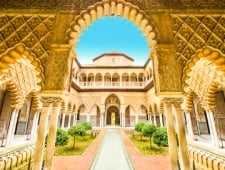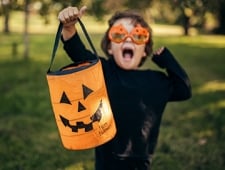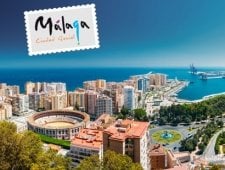As well as other global festivals and holidays, Spaniards also celebrate Christmas a bit differently than the well-known US traditions.
Christmas is a 2-week-long holiday season in Spain. People start to celebrate Christmas on December 24th and it ends with Dia de Los Tres Reyes Magos on January 6th. Let’s see how is Christmas celebrated in Spain!
Christmas Traditions in Spain
.jpg) The Christmas joy starts to sprawl throughout Spain at the beginning of December. Each year in the first weeks of December the Christmas markets in Spain take their places on the squares or city ports. The streets are adorned with Christmas lights, the shops are decorated with Christmas-themed ornaments. But the actual celebrations begin with the grand lottery on December 22nd.
The Christmas joy starts to sprawl throughout Spain at the beginning of December. Each year in the first weeks of December the Christmas markets in Spain take their places on the squares or city ports. The streets are adorned with Christmas lights, the shops are decorated with Christmas-themed ornaments. But the actual celebrations begin with the grand lottery on December 22nd.
December 22nd: The holiday season begins with the grand lottery, El Sorteo de Navidad. It is a live lottery show on TV, which is a big deal for Spaniards. Everyone who lives in Spain participates in this exciting event by buying a lottery ticket. On December 22, Spanish people get together and watch the lottery show with excitement to win El Gordo, the biggest prize.
December 24th: This day is called “Nochebuena” which represents the very well-known Christmas Eve. Nochebuena is the day that Santa Claus, or Papá Noel in Spanish, comes and delivers his presents.
The main difference between Nochebuena and Nochevieja (New Year’s Eve on December 31st) is the concept of the celebrations. Christmas eve in Spain is celebrated with families on December 24th; New Year’s Eve is the time people party with their friends on December 31st.
December 25th: Since a lovely evening has passed, this day can be considered a chill-out day and is reserved for resting. You’d better rest well on this day; there is a long list of days waiting for you to celebrate the end of the last year and the beginning of the new one.
.jpg) December 28th: This day is called “Dia de Los Santos Inocentes” which means Holy Innocentes Day. It comes from the catholic tradition and the concept of it is pretty similar to US’ April Fool's day.
December 28th: This day is called “Dia de Los Santos Inocentes” which means Holy Innocentes Day. It comes from the catholic tradition and the concept of it is pretty similar to US’ April Fool's day.
People play pranks on each other, even the Spanish media participates in this national day. They often broadcast absurd stories on TV and radio. So if you are in Spain on December 28th, it would be better if you don’t believe anything you hear.
December 31st: This day, New Year’s Eve, is called “Nochevieja” in Spain. This is the day when people wear fancy dresses, attend special events with friends, party all night, and greet the upcoming year with joy.
Finally, we left another year behind and it’s time to welcome a brand new year with opportunities and happiness. Spaniards believe day the best way to greet the next year is to eat 12 grapes in the last 12 seconds of the previous year.
Each grape is the symbolic version of each month in a year and is also a common practice in South America. It is strongly believed that it would bring good luck for the new year.
It is a well-known fact that some celebrations, such as Halloween, Christmas, or New Year, are a bit transformed due to cultural diversity. Yes, Spaniards loved to preserve their traditions. But partying on December 31st as in the US or other countries has also become pretty widespread in Spain.
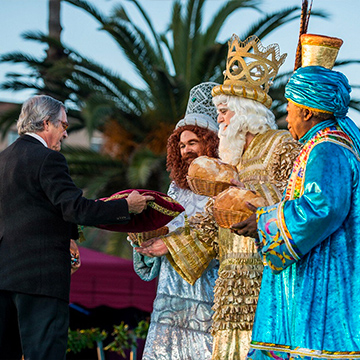 January 1st: The first day of the new year is also a chill-out day. In this way, party people can get rest and recover from the night before.
January 1st: The first day of the new year is also a chill-out day. In this way, party people can get rest and recover from the night before.
In the US and most countries, January 1st is the first day of the new year and the last day of the cheery holiday. However, it’s not the end of the holiday season in Spain. We all know that Spaniards know how to enjoy every bliss of a celebration better than anyone.
January 5th: It is almost time to present your gifts to your loved ones! On January 5th, people celebrate the arrival of 3 Wise Men with the “Cavalcade of the Magi”. Each city organizes special performances, but the most important event of the day is the midnight mass known as Cabalgata de Reyes Magos.
In this parade, people often carry the 3 Wise Men who throw candy to the children, and walk through the streets whilst singing under the fireworks. Musicians play the most famous Christmas songs in Spain. Artists and performers with zestful costumes participate in these events.
January 6th: This day is called “Dia de Los Tres Reyes Magos”, or Three Kings Day in English. According to the Bible, 3 Kings hit the road to offer their gifts to the newborn Christ. Along with the concept, Spanish people present holiday gifts to their loved ones on this day.
In line with the interaction between cultures, lately, Spanish practices and global traditions may have affected each other. As a result, sometimes people in Spain give 2 different gifts; one on the actual Christmas Eve on December 25th and the other on January 6th.
Interesting Facts About Christmas in Spain
Time flies by; the last holiday of the previous year and the first holiday season of the new year comes to an end on January 6th. But what about Santa Claus, reindeer, or the famous Christmas trees? Here are some fun facts about Christmas in Spain.
• Don’t be surprised if you cannot see Santa Claus everywhere.
Yes, Santa Claus is pretty popular in US and Europe but he is not the most significant figure in Spain. However lately, the holiday celebrations such as Halloween festivals or Christmas have been standardized worldwide.
You may come across a few Papá Noel around December 24th – 25th but not as many as in the US since the actual gift-givers of Spain are the Three Wise Men.
As in other holidays, Christmas traditions in Spain differ from region to region. For example, The Basque Country of Spain has a local Santa Claus called Olentzero who delivers gifts to the kids on Christmas Eve.
.jpg) • Christmas trees are a bit different in Spain.
• Christmas trees are a bit different in Spain.
When we say Christmas, we always imagine a green Christmas tree in the picture. Instead of plastic-made or actual living trees in Spain, you may come across conic-shaped monumental ornaments adorned with multi-colored lights.
The conic shape starting to expand from the top to the ground resembles the stylized version of a Christmas tree. It may not be the same as the traditional Christmas trees but their colorful and enchanting aura still deploys the joyous Christmas spirit.
• Bélen displays are a must-have.
As one can assume from the importance of Dia de Los Tres Reyes Magos, the story of the birth of Christ is a big deal in Spain. “Bélen” is the Spanish term that describes Bethlehem, the birthplace of Christ.
Bélen displays contain the nativity scene from the bible when the baby Jesus was born. In the following, Three Wise Men sees the iconic star of Bethlehem above the birthplace of the leader of Christians and hit the road to present their gifts to baby Jesus. The scene includes Joseph, Virgin Mary, baby Jesus, farm animals, and sometimes even the Three Wise Men.
Bélen figurines are exhibited on the streets, and in shop windows, and nearly every religious family showcase miniature Bélen displays in their homes.
PS: The poinsettia flowers are also one of the main Christmas decorations used in Spain. It is believed that its shape represents the Star of Bethlehem and the vibrant red color represents the blood of Christ.
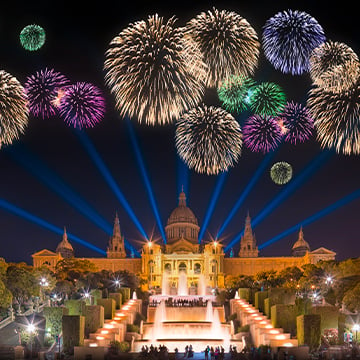 • We need lights. Lots, lots of lights!
• We need lights. Lots, lots of lights!
The light shows are as important as in any other country when it comes to Christmas decorations in Spain. Streets are usually gets enlivened by the enormous Christmas decorations wrapped with multi-colored lights.
For example in Málaga city center, Calle Larios is a must-visit on Christmas. The whole street is adorned with light arches and Christmas decorations. It is definitely an exciting, magical, and blinding experience.
• Spaniards love the sweet holiday dishes as much as the holiday itself.
As well as in any other country, dinners and leftover lunches are also a pretty big deal in Spanish culture. Families and friends gather around the dinner tables which are usually filled with appetizers, tapas’, meat, and seafood-oriented traditional dishes.
But candies, sweets, and desserts also bear great importance among all traditional Christmas foods in Spain.
For example, Roscos de Vino, Turrón, and Roscón de Reyes are the star pieces of all dinner tables during the Christmas holiday.
Turrón is a kind of nougat prepared with toasted almonds, pistachios, and other types of nuts. Roscón de Reyes is al known as “Spanish Christmas Cake” or “Kings’ Cake” which is also one of the most common desserts made during the Christmas season.
Let’s not forget the famous doughnut-shaped wine rolls of Spanish cuisine: Roscos de Vino. These liqueured biscuits which contain a small amount of sweet wine are pretty famous around Málaga, and a must-try while enjoying the Christmas season in Spain!
PS: The best way to enjoy these delicious traditional desserts of Iberian cuisine is to try them along with Cava, the Spanish version of French champagne. Cava is one of the indispensable beverages on the Christmas tables in Spain.
We can talk about this exciting holiday for days, but it’s always best to experience it yourself. In this way, you can see for yourself that a regular day in Spain is nearly as colorful as these joyous festivals.


